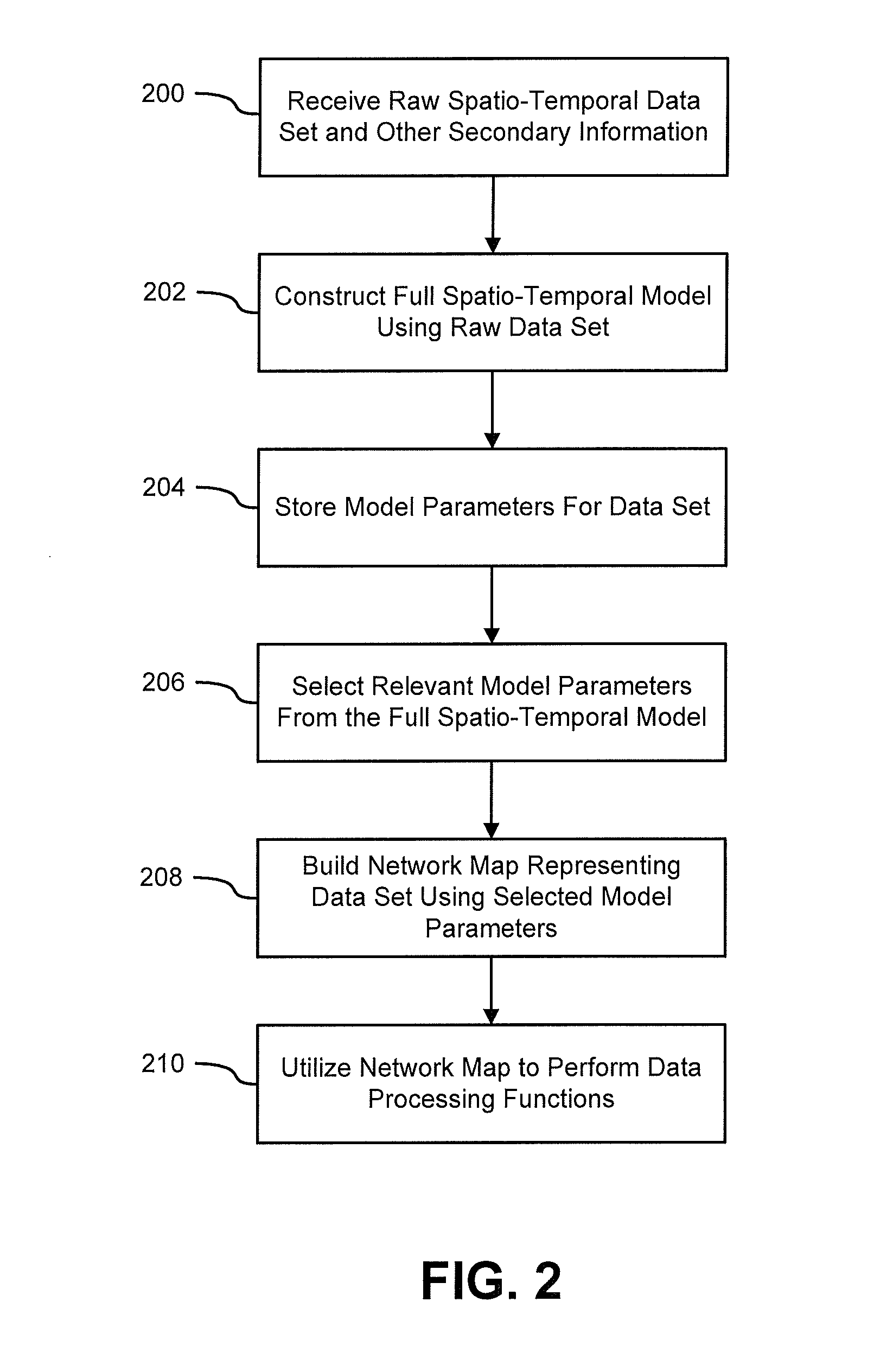Systems and methods for modeling and processing functional magnetic resonance image data using full-brain vector auto-regressive model
a functional magnetic resonance and image dataset technology, applied in image enhancement, instruments, applications, etc., can solve the problems of not providing any information regarding the relationship of activity in one voxel, not providing any information about the dynamics of ongoing brain activity derived using glm technique, and large fmri dataset, so as to reduce the representation of data
- Summary
- Abstract
- Description
- Claims
- Application Information
AI Technical Summary
Benefits of technology
Problems solved by technology
Method used
Image
Examples
Embodiment Construction
[0020]Aspects of the present invention generally include systems and methods for modeling functional magnetic resonance image datasets using a multivariate auto-regressive model that captures temporal dynamics in the data, and creates a reduced representation of the dataset representative of functional connectivity of voxels with respect to brain activity. More specifically, aspects of the invention include systems and method that fit raw spatio-temporal data with a multivariate auto-regressive model. This model captures the temporal dynamics in the data, and creates a reduced representation of the data. Coefficients in the model with high weights can be retained as indices that best describe the full spatio-temporal data. When there are a relatively small number of temporal samples of the data, sparse regression techniques are used to build the model. The model coefficients are used to perform data processing functions such as indexing, prediction, and classification.
[0021]Magnetic...
PUM
 Login to View More
Login to View More Abstract
Description
Claims
Application Information
 Login to View More
Login to View More - R&D
- Intellectual Property
- Life Sciences
- Materials
- Tech Scout
- Unparalleled Data Quality
- Higher Quality Content
- 60% Fewer Hallucinations
Browse by: Latest US Patents, China's latest patents, Technical Efficacy Thesaurus, Application Domain, Technology Topic, Popular Technical Reports.
© 2025 PatSnap. All rights reserved.Legal|Privacy policy|Modern Slavery Act Transparency Statement|Sitemap|About US| Contact US: help@patsnap.com



